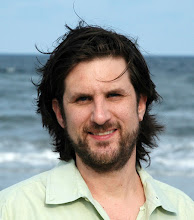The NY Times has a good article about Disney's plan to improve their California Adventure Theme Park: Will Disney Keep Us Amused?.
Disney Park's are a tough sell. I lived in southern California for awhile and bought a season pass to both parks. By the end of our year-long pass my then five five year-old, when asked whether he'd rather go to the community pool or to a Disney Park, always chose the pool. Disney's problem? To this day -- six years later -- he still says he'd prefer the pool than to a Disney Park, or the Wii to either.
Disney's issue is that they unleashed an entirely new category decades ago in the Theme Park industry, and now they're at the top of the pack of their Strategic Group. That is, when people choose whether to trade up or down they see Disney as the Platinum standard. Never mind that other parks cost less, offer less, but are more fun: take Nickelodeon's Nick Hotel in Orlando, for example. Nick-land, as they call it, is a hoot: my kid's always up for that. The rooms cost less than almost any Disney hotel and there's no admission fee for the activities.
Despite, that Disney's decided their answer lay in technology, which is how this analysis ended up in this blog. Let's look at Disney's original park curve: they Eliminated the filthy and dangerous element of an amusement park, Reduced wild rides, Increased magic and safety, and Created media tie-in. It worked.
Their new ride is in 3D; you ride through and play games that mimic the games people play at traditional traveling amusement parks, though there aren't prizes. Somehow it involves Toy Story. Disney: the ride sounds cool -- I'll eventually be on it -- but I don't get how it's transformative. An experience where you wait in line (ouch), ride through playing 3D carnival games (not bad but not breathtaking), then leave. I haven't seen it but it feels like red-ocean competition.
My guess is Disney should have thought about why people trade up to their parks, looked at the Chain of Buyers who decides to go to the Park's, and tried a gutsier move. For example, Disney knows modern people intensely dislike lines so why not focus on a strategy that gets rid of them?
Take the "ride" apart and put each 3D game into a series of mini-sections: make enough so none has an unmanageable line. If the lines get long, add more (and be glad at the expense: it exists only because of higher demand). Better yet, tie the game-playing experience into an online or console-based game that's somehow tied together. Kids practice on the Internet and Wii version, then show up at the park to kick-butt on the giant 3D one. That'll get kids to nag their parents to go to Disneyland, rather than the other way around.
Disney built a blue ocean by redefining the meaning of a Theme Park way back when. It's time to do it again; look to the non-customers, realize they're boxed-in at the top of their Strategic Group, confront the Chain of Buyers problem head-on, and think differently, like Walt did.
Putting people inside a video game sounds fun, but it also sounds a lot like an upscale version of the same thing people already have in their living rooms. If I find myself at California Adventure I'll try it, but I'll bet my kid would still prefer to hang at the pool or the beach. The experience there is also 3D, and amazingly realistic.
Popular Posts
Sunday, February 10, 2008
Strategic Groups: Drawing the Line at Lines
Posted by
Michael Olenick
at
3:49 PM
![]()
![]()
Subscribe to:
Post Comments (Atom)

No comments:
Post a Comment